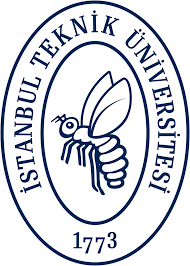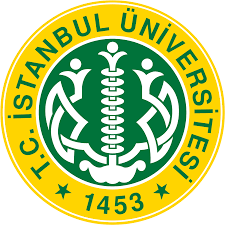Prelegenci

Prof. Lena Burbulla Ludwig Maximilian University of Munich, Germany
Vicious cycle of iron dyshomeostasis and dopamine oxidation in BPAN patient dopaminergic neurons
Vicious cycle of iron dyshomeostasis and dopamine oxidation in BPAN patient dopaminergic neurons
Beta-propeller Protein-Associated Neurodegeneration (BPAN), a subtype of the rare group of “Neurodegeneration with Brain Iron Accumulation” (NBIA) disorders, displays unique pathological hallmarks including iron build-up in the substantia nigra, prominent degeneration of nigral dopamine neurons, and early-onset parkinsonism. However, the molecular mechanisms contributing to the distinctive loss of nigral dopaminergic neurons, and what role iron dysregulation may play in this, remain enigmatic. To model the unique pathology in this neuronal subtype, we differentiated BPAN patient-derived induced pluripotent stem cells (iPSCs) into long-term cultures of midbrain dopaminergic neurons. Our model system revealed altered protein expression in BPAN neurons, most notably in regulators of iron and dopamine homeostasis, and disrupted dopamine metabolism resulting in accumulation of oxidized dopamine. This oxidation is catalysed by iron and culminates in the formation of neuromelanin, a neuroprotective process that sequesters potentially toxic metals and reactive compounds. However, excess iron and/or reactive intermediates of dopamine oxidation may saturate the neuromelanin system, eventually contributing to neurotoxicity. Of note, iron dyshomeostasis and excessive oxidized dopamine has been demonstrated in post-mortem tissue and iPSC-derived neurons from various Parkinson’s disease (PD) patients. Thus, findings from our work may represent shared pathological mechanisms between BPAN and the second most common neurodegenerative disease, PD. Future explorations into the intersection of these pathways may reveal promising new strategies for targeted protection of the highly vulnerable nigral dopaminergic neurons, potentially impacting patient populations well beyond BPAN and NBIA.

Prof. Magdalena Chrościńska-KrawczykHead of
the Pediatric Neurology Department Medical University of Lublin, Poland
BPAN Clinical Trials
One of the subtypes of NBIA is BPAN, which is caused by a mutation in the WDR45
gene. Since the genetic defect in BPAN, consisting in a mutation in the above gene, results in
disorders of the autophagy process, it seems natural that stimulation of an inefficient cellular
process may bring a significant improvement in cell functioning, and thus, therapeutic
benefits expressed in the improvement of the clinical condition of patients. Genistein [5,7-
dihydroxy-3-(4-hydroxyphenyl)-4H-1-benzopyran-4-one] is one of the flavonoids belonging
to the group of isoflavones, exhibiting a wide spectrum of biological activities. This molecule
has the ability to induce many molecular effects that can be used for therapeutic purposes,
such as antioxidant activity, inhibition of inflammation, promotion of apoptosis, modulation
of the activity of steroid hormone receptors and metabolic pathways. In addition to the above-
mentioned features of genistein, it is characterized by additional aspects of action that make it
a very good candidate for a drug for neurodegenerative diseases. First of all, literature data
indicate the inactivation of mTOR kinase in various types of cells under its influence, which
is a signal to inhibit the processes of protein synthesis and induction of autophagy. The aim of
the project was to use genistein in pediatric patients with BPAN, under the care of the
Pediatric Neurology Department of the Medical University of Lublin. Six-month observations
indicate clinical improvement, especially in mildly symptomatic patients. Positive changes
were observed primarily in the cognitive but also motor sphere. Work is currently underway
on the use of genistein in other varieties of NBIA.
Prof. Agnieszka Dobrzyń
Lipid metabolism alterations in NBIA-MPAN: current state and future perspectives

Dario FinazziProfessor Department of Molecular and Translational Medicine – University of Brescia, Italy
and
Barbara Gnutti PH.D. student in the Department of Molecular and Translational Medicine University of Brescia, Italy
Genetic alterations within the C19orf12 gene lead to the development of Mitochondrial Membrane Protein Associated Neurodegeneration (MPAN), a rare hereditary neurological disorder included in the Neurodegeneration with Brain Iron Accumulation category (NBIA4). C19orf12 codes for a small protein located in the mitochondria, endoplasmic reticulum, and at sites associated with mitochondrial membranes. The function of the protein as well as the molecular underpinnings of the disease are poorly described. Experimental results point to an involvement of the protein in lipid metabolism, maintenance of mitochondrial function, and the regulation of autophagy. We exploited the zebrafish experimental system to investigate C19orf12 biology. There are four counterparts of the human gene in the zebrafish genome: c19orf12a located on chromosome 18, and c19orf12b1, b2, and b3, clustered in tandem on chromosome 7. According to available RNA-seq data c19orf12a is expressed at higher levels during the early stages of zebrafish development. The WISH analysis showed a similar expression pattern in CNS and somites for all the paralogues at 24 hpf.A zebrafish morphant with a knockdown of the c19orf12a gene displayed abnormal brain morphology, a smaller head and eyes, reduced yolk extension, a tilted and thinner tail, and a significant disruption in musculature formation, leading to impaired locomotor behavior. The co-injection of the human C19orf12wild-type mRNA restored the normal morphology, whereas the co-injection of the mutant mRNA failed to do so.To delve deeper into the mechanisms behind neurodegeneration and the late-onset effects in adult zebrafish, we developed stable c19orf12 loss-of-function models using the genome editing technology. So far, we have generated two stable c19orf12amutant lines: one with a 2 bp deletion (Δ2) leading to a premature stop codon, and another with an in-frame, potentially pathogenic,3 bp deletion (Δ3). We are performing a comprehensivephenotypic evaluation including the assessment of neuronal development and behavior. The initial characterization did not reveal any significant morphological alterations, although the Δ3 F4 generation, not provided with wild-type maternal mRNA, exhibited a significant larval lethality. The mutants show perturbation in the locomotor behavior, such as an increase in the frequency of the tail flipping at 24 hpf and a longer distance swamat the end of a cycle of alternating light–dark periods at 120 hpf. Further analysis is ongoing to investigate the lipid metabolism and the autophagy flux in mutant embryos and larvae.

Yuzuru ImaiPhD Associate Professor Department of Research for Parkinson's Disease, Juntendo University Graduate School of Medicine, Japan
The phospholipase A2 group VI (PLA2G6) gene causes a movement disorder Parkinson's disease and infantile neuroaxonal dystrophy (INAD), depending on mutations. PLA2G6 encodes a phospholipid lipase, the function of which was unknown. A pathological feature of PLA2G6-associated neurodegenerative diseases is a marked accumulation of Lewy bodies, which are neuronal inclusions of the presynaptic protein α-synuclein and are thought to cause neurodegeneration. To elucidate the mechanism of Lewy body formation, we generatedPLA2G6-knockout Drosophila (fruit fly) as a PLA2G6-associated neurodegeneration (PLAN) model. Ablation of the PLA2G6 gene altered phospholipid composition, leading to neurodegeneration and dissociation of α-synuclein from the synaptic vesicle membrane. Importantly, we observed that overexpression of C19orf12, the gene responsible for MPAN, in PLA2G6-knockout flies suppressed neurodegeneration, suggesting a common pathway of abnormal lipid metabolism pathway in MPAN as in PLAN. In this presentation, I will report on the abnormalities in lipid metabolism and the consequent impairment of the autophagy pathway and accumulation of α-synuclein in the C19orf12-knockout fly model.

Arcangela Iuso
PhD Helmholtz Zentrum München, Germany

Professor Arzu Karabay
Cellular Effects of Kufor Rakep Syndrome Mutations
Inherited rare neurodegenerative diseases are caused by pathological mutations leading to loss of structure and functions in patients’ cells. Due to high prevalence of consanguineous marriages in Turkey, these diseases are more common than in the rest of the world. It is often difficult to correctly diagnose these patients based on solely clinical presentation because of the overlapping symptoms of these rare neurodegenerative disorders. In this context, molecular investigations are essential to diagnose these diseases accurately.Two siblings from a consanguineous Turkish family with a preliminary diagnosis of spastic paraplegia were directed to my lab for an unambiguous molecular diagnosis of the diseasedue to patients’ mixed neurological presentations. To provide an accurate diagnosis of the disease, we applied whole exome sequencing to identify the genetic mutation of the patients, and we discovered a homozygous frameshift mutation in the ATP13A2 gene and determined that they had Kufor-Rakeb Syndrome (KRS) considering together with their clinical symptoms. ATP13A2 gene encodes a protein involving in the regulation of the intracellular iron metabolism. We discovered that ATP13A2 mRNA was destroyed by non-sense mediated decay as a result of the frameshift mutation, and its protein was not produced in patients’ fibroblast cells. Although KRS has been predicted to be assessed in the NBIA disease group since ATP13A2 is involved in iron transport, there is still conflicting information in the literature. Therefore, we analyzed the presence of iron accumulation in these patients' cells and we found that ATP13A2 protein deficiency caused iron accumulation in patients' fibroblasts, and this was reflected as hypointense basal ganglia findings on T2-weighted MRI.As a result, we propose that the absence of ATP13A2 protein impairs the iron disposal mechanism as found in other NBIA, and KRS could be included in the NBIA spectrum. We reasoned that the lack of iron accumulation in the MR images of other KRS patients presented in the literature was due to MRI's limited sensitivity to identify this accumulation in cases where the cumulative accumulation of iron was below a particular level. As a result, we decided to investigate the influence of different kinds of ATP13A2 mutations causing KRS on iron accumulation in patient-specific fibroblast cells. In accordance with our findings, we discovered that all of the mutations we evaluated that altered ATP13A2 function, regardless of the type, resulted in iron accumulation in fibroblasts, albeit at different levels.

Thomas Klopstock, MD Profesor of Neurology University of Munich, Germany
More info

Manju KurianProfessor of Neurogenetics and NIHR Research Professor at UCL-Great Ormond Street Institute of Child Health Consultant Paediatric Neurologist at Great Ormond Street Hospital, UK
Gene therapy is an emerging precision therapy for a number of rare early-onset neurogenetic disorders, with licensed therapies already available for spinal muscular atrophy and AADC deficiency. Gene replacement therapy has the potential to be an efficacious therapy for NBIA disorders where the causative gene is known, given disease is usually attributed to a loss-of-function mechanism. In this lecture, I will present the status of gene therapy development for NBIA, with a focus on Infantile Neuroaxonal Dystrophy. I will discuss how common principles can be applied more broadly to the NBIA field.

Prof. dr hab. Iwona Kurkowska-Jastrzębska 2nd Department of Neurology, Institute of Psychiatry and Neurology, Poland
Biomarkers in neurodegenerative diseases
Blood–based biomarkers provide significant progress in the clinical assessment of neurodegenerative diseases. Currently, blood biomarkers for detecting Alzheimer's disease-specific amyloid and p-tau pathologies are considered sufficiently proven to start use in the clinic. Specific biomarkers of neuron degeneration, such as amyloid-β, tau peptides, neurofilament light chain, β-synuclein, and ubiquitin-C-terminal hydrolase-L1, and glial degeneration (glial fibrillary acidic protein), may measure key pathophysiological processes in several neurodegenerative diseases. In neurodegeneration with iron accumulation, measuring synuclein pathology, and glial and neural degeneration may provide an important insight into the disease stage and may be used to monitor the disease and response to treatment.

Sonia LeviFull Professor of Biology, School of Medicine, Vita-Salute San Raffaele University and
Head of the Proteomic of Iron Metabolism Unit, Division of Neuroscience, DIBIT, IRCCS-OSR, Italy
Full Professor of Biology, School of Medicine, Vita-Salute San Raffaele University and
Head of the Proteomic of Iron Metabolism Unit, Division of Neuroscience, DIBIT, IRCCS-OSR, Italy
To clarify the relationship between brain iron dys-homeostasis and neurodegeneration, we developed hiPS-derived astrocytes of PANK2- and COASY-associated neurodegeneration (PKAN and CoPAN). They are two NBIAs caused by mutations in genes that codify for key enzymes in Coenzyme A biosynthetic chain reactions. Both diseases are characterized by progressive neurodegeneration and a huge iron-accumulation in the globus pallidus of patients.
PKAN astrocytes showed cytosolic iron accumulation, alteration of iron metabolism, mitochondria morphology, respiratory activity, oxidative status, signs of ferroptosis and were prone to develop a stellate-like phenotype, thus gaining a neurotoxic feature, as confirmed by co-cultures of PKAN astrocytes and glutamatergic neurons. Experiments ran in CoPAN astrocytes showed cytosolic iron overload, a tendency to acquire a stellation phenotype and a positive significant correlation between the stellation grade and the amount of up-taken transferrin, suggesting a potential impairment in membrane dynamics that could be at the basis of iron overload also in CoPAN astrocytes. Analysis of constitutive exo-endocytosis, a key route for cellular iron intake, and vesicular dynamics, by exploiting the activity-enriching biosensor SynaptoZip, led to the finding of a general impairment in the constitutive endosomal trafficking in PKAN astrocytes. Super-resolution (SRFF) experiments, confirmed an impaired intracellular fate of transferrin-loaded endosomes. In addition, cytosolic and mitochondrial aconitase activity, heme content, as well as the mitochondrial redox-active labile iron pool resulted strongly reduced respect with the controls. Thus, the impairment of iron delivery to mitochondria appears the cause of cell iron delocalization, resulting in cytosolic iron overload and mitochondrial iron deficiency, that triggers mitochondria dysfunction promoting neurodegeneration. These astrocyte models result helpful not only to clarify pathogenetic mechanisms that lead to iron overload, but also to find common routes in two exemplar NBIA disorders. Furthermore, they allowed to test new therapeutic options, as for example the PPAR Gamma Agonist Leriglitazone that we found to be efficient in ameliorating mitochondrial function in PKAN astrocytes.

Dr. Mario Maute University Medical Center in Groningen, Netherlands
WDR45’s role in autophagy and beyond
WDR45’s role in autophagy and beyond
The WDR45 gene, which when mutated causes BPAN, produces a protein called WDR45 that is also involved in autophagy, the process in which the body’s cells eliminate damaged or unnecessary components. The precise molecular function and contribution of this protein to this pathway, however, remains unclear. Depletion or mutations in WDR45 are also causing dysregulation in iron metabolism and endoplasmic reticulum morphology. Furthermore, we and others have shown that mitochondria, which are the small organelles in cells responsible for important processes such as energy production, metabolism regulation, inflammation and cell death, are affected by the inactivation of the WDR45 protein.
Our team is currently investigating whether these two aspects, namely autophagy and mitochondrial functions, could contribute to the BPAN pathology, and how. To do so, we are using the model cell lines that are commonly employed in research laboratories to study the basic mechanisms of a cell. Recently, we have also established a cellular system with neuronal-like cells, to better mimic the clinical situation since BPAN is characterized by a dysfunction in brain cells, including neurons. In this neuronal system, we have deleted WDR45 and now can study the role of this gene in autophagy and mitochondria function.

Dr Karolina Pierzynowska University of Gdańsk, Poland
Autophagy disorders in NBIA
Although genes affected in different types of neurodegeneration with brain iron accumulation (NBIA) have been identified, molecular mechanisms of these diseases are not yet fully understood. On the other hand, only knowing details of pathomechanism of a specific disease may allow to develop effective therapies. Since NBIA is characterized by iron accumulation, the process of ferroptosis (programmed cell death dependent on iron) has been suspected to be involved in the pathogenesis of this disease. Preliminary experiments indicated that expression of some genes coding for proteins involved in ferroptosis may be dysregulated in various NBIA diseases. This discovery, accompanied with studies on levels of specific ferroptosis-related proteins, opened a new field in the studies on NBIA which may lead to identification of as yet unknown mechanisms of this disease and can facilitate studies on development of novel therapeutical strategies.
Professor Susanne Schneider Ludwig-Maximilians-University of Munich, Germany
More info
NBIA Trial readiness
Drug development is a complex process which entails multiple steps and may take 10 to 15 years or more before the licensing stage. In this talk the different steps will be discussed to familiarize the NBIA community with some of the hurdles along the way. These include understanding diseasepathophysiology, chosing a drug candidate, identification and validation of biomarkers, developing clinical outcome measures, acquiring knowledge of the disease and disease course, establishing effective recruitment strategies, chosing a smart trial design, handling of regulatory aspects and securing funding while cost pressures rise.

Dr hab. n. med Marta Skowrońska2nd Department of Neurology, Institute of Psychiatry and Neurology, Poland
MPAN Pre-Clinical Trials
The role of the protein encoded by C19orf12 remains unknown, but it appears to be related to mitochondrial function.Autopsy studies of patients with NBIA-MPAN showed similar neuropathological changes that have been described in Parkinson's disease (PD). Mitochondrial dysfunction is a key element in the development of the PD. Lipid peroxidation causes α-synuclein-induced neurotoxicity. The role of omega-3 PUFAs in adjuvant therapy in PD has been investigated in both experimental models and clinical trials. It was found that DHA used in the mouse model prevented the loss of substantia nigra cells. In clinical trials, omega 3 PUFA resulted in improvement of both neurological performance, disease severity and mood disorders during 3-6 months of use. Omega-3 PUFA supplementation is associated with improved cognitive functions - it increases the number of synapses, stimulates the growth of nerve cells, and increases the concentration of the BDNF factor Additionally, it has been proven that the use omega 6 - linoleic acid or C19orf12 protein in the PLAN animal model rescued neuronal phenotype.We designed a clinical study for MPAN patients with omega 3 and 6 PUFA. Results: Patients were treated for 6 months with omega 3,6 – randomized for 2 different doses. They were assessed at the entering the study and after 6 months. We have recorded changes in neurological status and biomarker status in all patients.

Anna Stęplowska, PhysiotherapistIntensive Therapy Center - Olinek, Poland
The title of her presentation is “Physiotherapy assessment of disease progression”
She will talk about changes occurring in the gross and fine motor skills in patients with NBIA and discuss physiotherapy approaches.

Małgorzata Syczewska Professor in Kinesiology Lab, Dept. Rehabilitation of The Children’s Memorial Health Institute in Warsaw, Poland
Introduction
NBIA is a heterogeneous group of progressive diseases, with wide spectrum of clinical signs, including movement disorders and pyramidal involvement, such as balance problems, dystonia, bradykinesia, spasticity, lack of proper coordination, etc. These problems seriously limits functional capacity of the patients, they could also aggravate in time. The aim of this study is to assess the gait and balance impairments of NBIA patients with objective and instrumented methods, and to monitor their changes in time.
Patients
Twenty patients participated in this study: 13 with MPAN, 4 with PKAN and 3 with BPAN, aged from 4 to 21 years of age.
Methods
Three objective, instrumented tests were applied. First, objective gait analysis using 12-camera VICON MX system synchronized with 2 Kistler force plates. Lower body Plug-In-Gait model and marker set were used. Six captured trials were later averaged, and from the averaged data spatio-temporal, kinematic and kinetic parameters were used for assessment. Additionally Gait Variability Scores, Gait Profile Scores and Gait Deviation Index were calculated as global indices of abnormal gait pattern. During second test patients walked on NOVEL e-med system to collect data showing load distribution below feet during gait. Third test was balance assessment on Kistler force plate during quiet standing with eyes open and eyes closed.
Results
All participants were able to undergo gait analysis, although in case of some of them kinetic data were not collected due to the necessary help (parents, crutches) while walking. Only 8 children were able to undergo balance test, and 11 the gait assessment on e-med platform. These problems arisen mainly from communication problem, although some patients had serious coordination problems which prevented them quiet standing for 30s. 10 patients were evaluated for the second time around 1 year or more from the first evaluation. The deterioration of the functional status of other 10 participants made their participation impossible. Surprisingly, the results of those who were able to undergo the evaluation for the second time were not deteriorating substantially, and in few cases even improved.
Discussion and conclusion
Objective, instrumented test could be applied to NBIA patients, helping to assess their functional status, and monitor the progression of the disease.

Valeria Tiranti PhD Molecular Pathogenesis of Mitochondrial Disorders Unit of Medical Genetics and Neurogenetics Head of the Functional Department of Experimental Neuroscience Fondazione IRCCS Istituto Neurologico Carlo Besta, Italy
Unveiling COASY-Related Neurodegeneration: Insights from Patients and a Neuronal-Specific Mouse Model
Unveiling COASY-Related Neurodegeneration: Insights from Patients and a Neuronal-Specific Mouse Model
COASY protein-associated neurodegeneration (CoPAN) is a very rare, autosomal recessive form of NBIA caused by mutations in COASY. This gene codes for CoA synthase, a bifunctional enzyme that catalyzes the last two steps of cellular coenzyme A (CoA) biosynthesis. To date, only five patients worldwide have been identified with features similar to other forms of NBIA, such as early onset dystonia, Parkinsonian traits, cognitive impairment, and brain iron accumulation. More recently, mutations of COASY associated with the complete absence of the protein have been reported in cases of pontocerebellar hypoplasia, microcephaly, and arthrogryposis with an invariable perinatal lethal phenotype, likely due to profound deficiency of CoA. We have collected fibroblasts from new cases carrying novel COASY variants with unusual phenotypes and performed an in depth biochemical and molecular characterization. We carried out unbiased RNA sequencing to profile the transcriptomes. Bioinformatic analyses revealed significantly differentially expressed genes. In parallel, we further characterized a mouse model specifically lacking the Coasy gene in neurons. These mice exhibited a phenotype characterized by profound neurological alteration with progressive sensory-motor defects, dystonia and rigidity, impaired iron homeostasis, mitochondrial dysfunction, and reduced survival. In addition to the presence of clear neuropathological signs attributable to neurodegenerative events, the mice show widespread neuroinflammation, characterized by microglial activation and astrogliosis, increased expression of pro-inflammatory cytokines in the brain and elevated plasma levels of circulating GFAP. We have performed whole RNAseq and single cell RNAseq studies in the brain of these mice and are currently analyzing the data. The combination of deep molecular studies in fibroblasts from patients and in the mouse model will allow us to shed light on the pathogenesis of the disease and pave the way for future therapeutic interventions.

Prof. dr. hab. Grzegorz Węgrzyn University of Gdańsk, Poland
PKAN, MPAN, BPAN,PLAN; Pre-Clinical Studies
One of putative treatment options in various genetic and neurodegeneration diseases which are caused by accumulation of macromolecular aggregates in cells is stimulation of the autophagy process. Such a therapeutic strategy is based on the assumption that induced autophagy might be helpful in removal of the toxic aggregates from cells, thus resuming the balance in the cell physiology. The problem is, however, that overstimulation of the autophagy process may lead to cell destruction. Already known autophagy stimulators are very effective in vitro, however, they can cause severe adverse effects in patients, especially when used for a log time. It is therefore proposed to stimulate autophagy using a natural compound, a molecule from the group of flavonoids, which can induce autophagy efficiently, while gently enough to avoid auto-destruction of cells and adverse effects. Studies with cellular models suggested that such a strategy might be effective in different diseases, including at least some types of neurodegeneration with brain iron accumulation (NBIA).

Prof. Mariusz R. WięckowskiHead of the
Laboratory of Mitochondrial Biology and
Metabolism at the Nencki Institute of
Experimental Biology of the Polish Academy of
Sciences in Warsaw, Poland
Mitochondrial and metabolic alterations in fibroblasts derived from MPAN patients
Among several NBIA subtypes, mitochondrial membrane protein-associated neurodegeneration
(MPAN) caused by mutation in C19orf12 gene recently is extensively investigated due to the fact,
that the molecular mechanism underlying MPAN is still not fully understood. During my lecture, I will
present the recent status of our research in the NBIA field. I will focus on disrupted redox
homeostasis, mitochondrial dysfunction, disturbed reactive oxygen species (ROS) homeostasis and
alterations in oxidative stress-response system in the fibroblasts of MPAN patients. Our study is
financed from the state budget from the Education and Science Ministry program entitled “Science
for Society”. Project number NdS/537386/2021/2022, the amount of financing 1 900 000 PLN, total
value of the project 1 900 000 PLN. Poland

Zuhal Yapici, M.D.
Professor of Neurology & Child Neurology
Istanbul University, Istanbul Faculty of Medicine, Turkey
Presentation of the NBIA group from Turkey
Diseases classified under the title "Neurodegeneration with Brain Iron Accumulation" (NBIA) are a
group that has been studied intensively in the world. These diseases can involve the entire
neurological systems, and systems other than the nervous system. As the number of cases increases,
it appears that the clinical spectrum is gradually expanding and diversifying. Since most of them are
autosomal recessive, and relatively more common in societies with consanguineous marriages, it
may require greater outreach to these regions and restructuring of research opportunities. In the
light of current information, I will give a brief summary about the Turkiye NBIA study group that has
just established this year. In addition, I will talk about my NBIA experiences, especially MPAN disease,
which is the main theme of this symposium. It seems necessary for countries to come together, share
diverse information, and coordinate translational research efforts to explore the developments,
which could provide insights into broader medical conditions sharing similar symptoms as well as
NBIA's.